- Home
- MURAnews
- Previous issues
- Spring 2017 - present
- Winter 2021
MURAnews Winter 2021
MURANews Winter 2021 issue in PDF format
In this issue:
It was heartening to see such a good attendance at MURA’s first-ever “Zoom” Annual General Meeting in November. More than 50 members attended the online meeting. An unanticipated bonus was having members participate from both coasts of Canada. Ralph Matthews attended from Vancouver BC, and Peter Ramsden from St. John’s NL. MURA Council is recommending that retirees be able to participate virtually in all future AGMs, even when we are able to hold them on campus after the pandemic. Thanks to those who helped make this meeting a success – and particularly our guest speaker, Lori Burrows. Highlights of the meeting, and a summary of Lori’s well-received talk on antibiotic resistance, are featured on page 3 in this issue of MURAnews. My thanks also to outgoing Council member Phyllis DeRosa-Koetting for her contributions to Council and MURAnews for the past five years, and to Debbie Weisensee who remains on MURA Council but has stepped down as treasurer. Barb Carpio has joined Council, and John Horsman has returned for a second term. Hank Jacek has stepped into the vice-presidency. Nancy Gray is now MURA’s treasurer and Nora Gaskin continues as secretary. My thanks to them, and to the members of the council and executive who are continuing their service to retirees. Due to the delayed timing of the 2020 AGM caused by COVID-19, MURA’s next AGM will occur in less than five months. Please consider the call for nominations for 2021/2022 Executive and Council positions below. For the first time in MURA’s history, the mailed version of this newsletter is a shortened version of the full newsletter. Some interesting articles which take a lot of space, or which refer to mainly online content, have been omitted to limit the number of pages to 8. MURA Council has, with regret, set this limit for printing and mailing for budgetary reasons. The financial support from two of our funding partners has been substantially reduced, so we need to reduce expenditures. Unifor 5555 made a budgetary decision to change the amount they provide to MURA and to the Unifor 5555 Retired Worker’s Chapter to fit within the money they have for retirees. The Service Employees International Union (SEIU, Local 2), which has supported its retired hospitality services members for several years, is no longer providing funding. Printing and mailing MURAnews uses almost 35 percent of our income. Each retiree who can switch to electronic reading or print the newsletter at home will help MURA stay out of the red. We need to hear from at least 200 of you postal readers to make this happen. Please do your part if you are able. My best wishes to you all for health and happiness. Helen Barton Virtual Volunteer OpportunitiesJoin MIRA for virtual intergenerational activities this winter!
Contributed by Ellen Ryan The McMaster Institute for Research on Aging is offering intergenerational programming with students and adults over the age of 65 through Zoom this winter.
|
| Executive | Councillors | ||
| President: | Helen Barton |
Serving until 2023: | John Horsman |
| Vice President: | Hank Jacek | Serving until 2022: | Barb Carpio |
| Past President: | Heather Grigg |
Mary Gauld |
|
| Secretary: | Nora Gaskin | Debbie Weisensee | |
| Treasurer: | Debbie Weisensee (to Dec. 31, 2020) |
Serving until 2021: | Cliff Andrews Nora Gaskin |
| Nancy Gray (as of Jan. 1, 2021) |
Mahendra Joshi Mary Law Kathy Overholt |
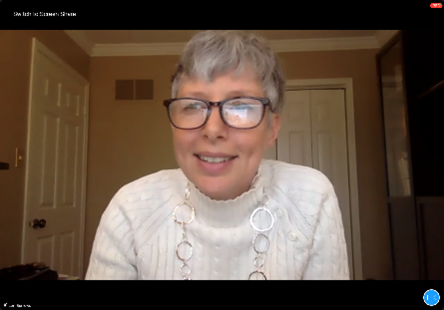 Dr. Lori Burrows, microbiologist, Associate Director (Partnerships and Outreach) of the Michael G. DeGroote Institute for Infectious Disease Research and Professor, Department of Biochemistry and Biomedical Sciences, presented a fascinating talk, “What happens when antibiotics stop working?”
Dr. Lori Burrows, microbiologist, Associate Director (Partnerships and Outreach) of the Michael G. DeGroote Institute for Infectious Disease Research and Professor, Department of Biochemistry and Biomedical Sciences, presented a fascinating talk, “What happens when antibiotics stop working?”Antibiotics (drugs that kill bacteria) were discovered by Sir Alexander Fleming almost a century ago. Although antibiotics kill bacterial infections, they cannot kill viruses. Antibiotics have changed our lives by extending our life expectancy over the last century by at least 20 years, but they have also changed how we die. In 1900 almost half of deaths were due to infectious diseases, compared to only 3% in 2010. If antibiotics stopped working, we would have no treatment for patients who get bacterial infections whether due to illness, wounds or burns, surgeries, or compromised immune systems due to organ transplants, chemotherapy, etc.
Bacteria (not patients) become resistant to antibiotics when random mutations in the bacterial strain survive treatment with an antibiotic, then multiply and spread that resistance to other species of bacteria. Overprescribing by doctors, and the misuse of antibiotics in agriculture (giving low dose antibiotics to animals, spraying them on fruit crops, etc.) have contributed to antibiotic resistance. Canada has reduced the use of antibiotics in food production, but other countries have poorer regulation in this area.
Developing new antibiotics has become more and more difficult, with very few being discovered since the 1980’s. The pharmaceutical industry has retreated from antibiotic discovery and development because it is economically unsustainable, and even small biotech companies who have stepped into the breach have gone bankrupt due to the low return on investment.
We need new strategies fast – we are now seeing bacteria that are resistant to every antibiotic in existence. Fortunately, global leaders like the United Nations and World Bank are starting to take notice of both the health and economic ramifications. A report published in the UK in 2014 found that “...by 2050 – if effective interventions against antimicrobial resistance are not made – 10 million deaths and an economic loss of US$ 100 trillion may occur annually as the result of such resistance”. Last year the major pharmaceutical companies got together and pledged to invest nearly US$1 billion, with the aim of bringing two to four new antibiotics to market by 2030. The Canadian government has put forth a federal action plan, however they have not yet implemented it. Dr. Burrows and her colleagues are working with the Public Health Agency of Canada to move it forward.
Innovations are underway: repurposing old drugs, as well as using drugs in combination; working on ways of making bacteria less toxic without actually killing them; looking for new drugs and new drug targets and using bacteriophages (viruses that kill only bacteria); developing immune stimulators; and developing vaccines against the most important diseases, such as Streptococcus pneumoniae, or pneumococcus (the most common cause of bloodstream infections, pneumonia, meningitis, and middle ear infections in young children).
Things you can do to help: only use antibiotics when prescribed by a certified health professional; when given a prescription for antibiotics always take the full prescription, even if you feel better; never use leftover antibiotics; never share antibiotics with others; and prevent infections by regularly washing your hands, avoiding contact with sick people, and keeping your vaccinations up to date.
McMaster initiatives: The new David Braley Centre for Antibiotic Discovery will be dedicated to finding new antibiotics and new ways to overcome antibiotic resistance. The Global Nexus for Pandemics and Biological Threats, to be housed in McMaster Innovation Park, will bring people from multiple disciplines within academia, public health and industry to work on infectious disease problems together. McMaster’s Biointerfaces Institute is envisioning paper-based diagnostics, like tissues or diapers, that can diagnose illnesses in their users.
Brian Beckberger, MURA’s delegate to the Salaried Pension Trust Committee, and Cliff Andrews, MURA’s representative on the Hourly Pension Plan Retirement Committee spoke about the pension plans. Their reports are available on the MURA website.
Congratulations to Ralph Matthews and Susan Birnie, who won the door prizes.
Welcome to new MURA Council member
Barb Carpio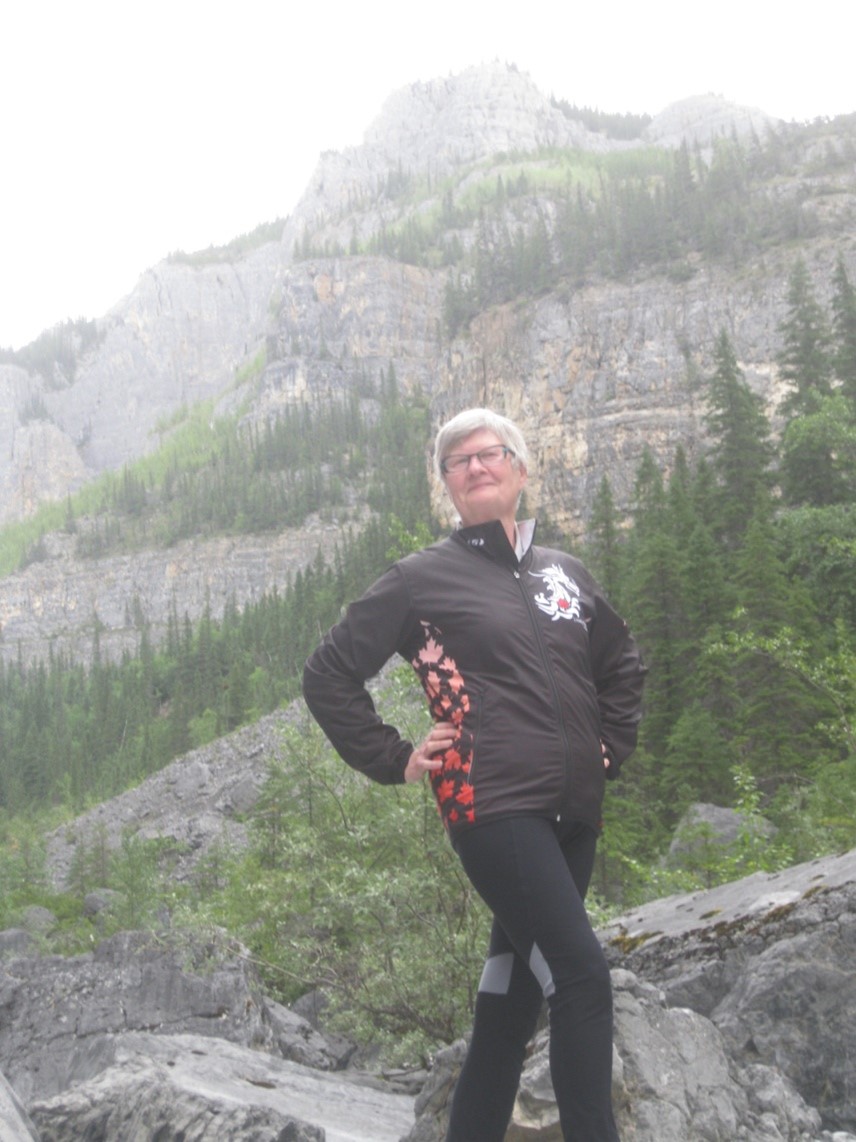 - I retired in 2008 after 24 years with the Faculty of Health Sciences, School of Nursing. My areas of interest were/are public health and international health. In addition to helping strengthen learning opportunities for nursing students to have clinical placements in northern Canada and abroad, I participated in several health sciences projects that partnered McMaster with universities and professional associations throughout Latin America and Mexico.
- I retired in 2008 after 24 years with the Faculty of Health Sciences, School of Nursing. My areas of interest were/are public health and international health. In addition to helping strengthen learning opportunities for nursing students to have clinical placements in northern Canada and abroad, I participated in several health sciences projects that partnered McMaster with universities and professional associations throughout Latin America and Mexico.
I was on MUFA council for a couple of years, and now look forward to working for you on MURA.
Since retirement I have been involved with the Discovery Program, and served as an observer for an appeal by a faculty member initially denied tenure. Currently I am a peer-educator with Seniors for Change, Hamilton Council on Aging and will be the MURA rep to CURAC on the Later Life Learning project.
This picture was taken during a 5-day paddle down the Nahanni River – my all-time favorite bucket list trip, though the MURA trips were always a close second.
Call for Nominations
MURA is a volunteer-based organization whose mandate is to facilitate a continuing spirit and connection among retirees and former colleagues, represent the interests of members in matters relating to their accrued benefits, contribute to and support the University, and foster an understanding of MURA’s functions among employees nearing retirement. See MURA Constitution, Article 2.
The duly constituted MURA Nominating Committee is now receiving input for the nomination of Council members for the three-year term starting in June 2021, as well as for President and Vice President for the 2021/22 year. The commitment isn’t overly demanding. You would be involved in advocating for the interests of your fellow retirees, while benefitting from maintaining connection with former colleagues.
The list of candidates will be presented by the Nominating Committee at the March meeting of Council.
Please forward expressions of personal interest and/or suggestions for nominees to the Nominating Committee Chair, Heather Grigg at: grigghm@mcmaster.ca or 905-335-6742 or to any member of the Nominating Committee no later than February 8, 2021.
| Council representatives: |
Mary Law |
| Debbie Weisensee |
|
| Member representatives: |
Pat Fraser |
| John McKay |
|
| Chair: | Heather Grigg |
Retirees in the News
By Helen Ayre
Ronald Duncan Barr, professor emeritus of pediatrics, pathology and medicine in McMaster’s Faculty of Health Sciences, and former chief of hematology-oncology at McMaster Children’s Hospital, was named a Member of the Order of Canada for his work in pediatric oncology, especially his research into cancer in adolescents and young adults. (See the Hamilton Spectator article “Hamilton doctor appointed to Order of Canada” for a profile of Dr. Barr.)
Margaret Denton, professor emeritus in the departments of Sociology and Health, Aging & Society, and member of the Advisory Board for the Gilbrea Centre for Studies in Aging, has been named to the Order of Hamilton in recognition of her long-term commitment as an advocate and leader, working to improve the lives of older adults in and around the Hamilton community. A short outline of Margaret’s work can be found on the City of Hamilton website.
Elko Kleinschmidt, Professor Emeritus in the School of Business, recently published a piece in the Hamilton Spectator entitled: What if we combined the fights against global warming and COVID-19?. Retirees interested in learning more about this topic and Elko’s work can contact him via his McMaster email, kleinsc@mcmaster.ca.
Gary Warner, retired faculty member from the Department of Romance Languages, where he taught French Literature, and former Director of the Arts and Science Program, was recognized with an honorary Doctor of Laws degree at the November Convocation. (See the Daily News article for a short profile of Dr. Warner and for a fuller tribute, visit the McMaster Arts & Science Program website).
Please contact MURAnews if you have news to share about McMaster retirees.
Members' Corner
(Re)Discover Your Local Library
In the nearby branch of the Hamilton Public Library, there are long shelves weighted down by guides to aging well and by memoirs of nonagenarians who are sharp of mind and strong of body. Here you will find cheerful accounts of eighty-year-olds who enjoy speed walking when they take a break from sky diving. Here also are books of admonishment about what can happen to elderly layabouts urging us to get up from our chairs, out of the house, and into shape.
The Library offers an alternative approach in old age. Instead of treatises on gerontology and the art of growing old gracefully, you can turn to the classics. How many decades has it been since you read War and Peace? There you will find Natasha, still spirited and beautiful, while Pierre, somewhat portly and avuncular as always, wins her in the end. This is a satisfying resolution at every reading. If you like the nineteenth century, spend a few days with Anthony Trollope’s Lady Glencora, who is delightful as always if a bit headstrong.
Those who prefer non-fiction can escape by reading travel literature, thereby dodging both Donald Trump and the coronavirus simultaneously. One can go anywhere in the world at any time in the best of company, unmasked.
Psychologists suggest it may be unhealthy to ignore the present and live in either a fictional world or in the real but unrecoverable past. Out of a sense of duty, I pass their warnings on to you but, in my heart, I say keep reading. Or if you prefer, keep knitting, keep painting, and when the snow clears keep on gardening.
Schooldays Redux
It is my pleasure to wish you a Happy New Year in these difficult times of isolation from family and friends. There is no doubt that, as such an innovative group of people with many talents, you found things to occupy your time. There is one activity that you might want to consider -- going back to school! Some of you are probably already involved in life-long learning, especially since McMaster has so much to offer online.
This experience for me has not been without its minor challenges; however, I carry on with working toward an English & Cultural Studies/Indigenous Studies degree and the course material is truly inspiring. It keeps me busy, but I look forward to each day. It is quite fascinating to be taking online courses, especially since technology is not one of my strong suits. Yet, it has been an experience that I would recommend. There were some bloopers at the beginning, especially with the various web programs that Mac has adopted. One of my classes in the fall was full of amazing teens, who are so adept at computer skills and very helpful. Unfortunately, instead of seeing my face on Microsoft Teams, they had to endure my screensaver family photo throughout a few classes. I still do that from time to time, but it is not a catastrophe.
The professors, teaching assistants and Faculty advisors have been full of patience and kindness as they work tirelessly to put together fascinating course material under difficult circumstances. They are always available if I need help and this is so greatly appreciated. One fascinating course is Traditional Ecological Knowledge with Professor Kitty R. Land Lickers. We spent considerable time in virtual outdoor lectures as she toured us around the Six Nations huge community garden, iPad in hand, all the while sharing her valuable indigenous knowledge of nature. We spent many lovely hours in those gardens with Professor Lickers as well as with Indigenous elders who kindly shared oral traditions. There is much to learn, and I felt honoured at times to be in their presence.
I do encourage you to take that leap into the courses offered by McMaster, in Continuing Education, online informational lectures or degree studies -- it is worth every moment! My wish for you is that you remain safe, healthy, busy, and full of hope for the future.

MURA Graduate Scholarship Fund News
MURA members have been supporting academic awards since 1992. A fully-funded endowment continues to provide an annual $2,500 in-course scholarship and a $750 graduand prize to undergraduate students studying society’s aging population.
MURA’s new academic awards initiative will provide a $1,000 annual scholarship to a graduate student researching technological advances related to seniors. The goal is to establish a $25,000 endowed fund to support this scholarship as soon as possible.
The fundraising drive was launched in November. The fund has already reached $9,850, thanks to the retirees and friends of MURA who made year-end gifts.
Please give generously to this fund. Donate online at MURAscholarship.ca or by phone at 905-525-9150, extension 24224.
Your donations are tax deductible and will help McMaster graduate students for years to come.
Recent passings
Syed Ahmad, Economics, Oct 30/20
David Basford, Pathology, Oct 16/20
Chris Bryce, Computing & Software, Jan 15/21
Andrew Burghardt, Geography & Earth Studies, Nov 27/20
James Crocket, Geology, Dec 22/20
David Counts, Anthropology, Nov 11/20
Ross Datars, Physics & Astronomy, Dec 17/20
Jessie Dunlop, Regional Medical Associates, Dec 4/20
Michael Gent, Clinical Epidemiology & Biostatistics, Oct 20/20
Constantine Georgiadis, Philosophy, Jan 6/21
Raymond Hobbs, Divinity College, Nov 6/20
Charles Johnston, History, Oct 30/20
Carol Nunn, University Library, Oct 29/20
Peter Pineo, Sociology, Nov 12/20
Jean Stein, Facility Services, Dec 23/20
Nicholas Solntseff, Computer Science & Systems, Aug 13/20
Shirley Turkstra, McMaster Children’s Centre, Oct 6/20
Welcome new members
compiled by Kathy Overholt
Alexander Ball, Pathology
Hubert de Bruin, Electrical & Computer Engineering
Kathie Fairman, University Library
Rose Gillespie, School of Nursing
Lawrence Hart, Medicine
Adam Hitchcock, Chemistry & Chemical Biology
Luke Janssen, Medicine
Ann-Marie Kolkin, Medicine
Robert Law, Housing/Residences
Krystyna Madej, Custodial Services
Sonya Martin, Admissions
Jadwiga Natkaniec, Housing/Residences
Susan Owens, Medicine
Rose Anne Prevec, Museum of Art
Margaret Robinson, Mail Services/Logistics
Marija Skrtic, Housing/Residences
Kevin Stanton, Utilities
Lazo Velaja, Custodial Services
Shiping Zhu, Chemical Engineering
And a belated welcome to:
Wendy Foster-de Groot, Research Office (ROADS)
Anju Joshi, Health Aging & Society
Marc Mallinson, Hospitality Operations

Your Money/Your Health
January 2021 Pension Plan Increase
Most, but not all, McMaster retirees are members of one of two pension plans: The Hourly Pension Plan and the Salaried Pension Plan. Furthermore, there is a group of retirees in the Salaried Pension Plan who are governed by a somewhat different set of rules, which apply only to employees who were hired on or after May 1, 2010 and who retired from the University as a Unifor Local 5555, Unit 1 member.By Cliff Andrews, MURA Representative, Hourly Pension Plan Committee, and Brian Beckberger, MURA Representative, Pension Trust Committee
On December 18th, 2020, MURA notified its members (those who have provided MURA with an email address) of increases in pensions starting January 2021 as follows:
- 1.34% for employees who were hired on or after May 1, 2010 and who retired from the University as a Unifor Local 5555, Unit 1 member
- 1.46% for all other retirees in the Salaried Pension Plan
In each case, the full increase is applied to those who were receiving a pension from either of the plans on June 30, 2019. Those who retired between July 1, 2019 and June 30, 2020 receive a pro-rated increase based on their respective pension plan. Those who retired after June 30, 2020 receive no increase.
- No increase for retirees in the Hourly Pension Plan
How these increases are calculated
Annual pension increases, if any, are based on the five-year average annual rate of return on the pension funds as of the previous June 30th. The five-year average annual rate of return as of June 30, 2020 was 6.34% [(4.68 + 5.84 + 8.29 + 11.16 + 1.71)/5] for the Salaried Pension Plan and 5.50% [(4.39 + 6.29 + 5.48 + 8.87 + 2.45)/5] for the Hourly Pension Plan. Increases are paid if this average exceeds 4.50% for most members of the Salaried Pension Plan, 5.00% for employees hired on or after May 1, 2010 in the Salaried Plan and who retired from the University as a Unifor Local 5555, Unit 1 member, and 6.00% for members in the Hourly Pension Plan. This figure is then compared against the percentage increase in the average Consumer Price Index (CPI) for the previous year, and the lesser of these is the percentage pension increase. The average monthly increase in the Consumer Price Index for the year ending June 30, 2020 was 1.46%.
For employees in the Salaried Pension Plan who were hired on or after May 1, 2010 and who retired from the University as a Unifor Local 5555, Unit 1 member, the five-year average annual rate of return of 6.34%, less
the 5.00% limiting factor described above, resulted in a pension increase of 1.34%.
For other members of the Salaried Pension Plan, the five-year average annual rate of return of 6.34%, less the 4.50% limiting factor, is further limited by the average monthly increase in the CPI of 1.46%. The overall result is a pension increase of 1.46% for these retirees.
Since the five-year average rate of return of 5.50% is less than the 6.00% limiting factor, there is no pension increase for retirees in the Hourly Pension Plan.
Additional information on the Hourly Pension Plan and the Salaried Pension Plan can be found on the Human Resources Services website.
Osteoarthritis of the Hip and Knee:
A Summary of Information from the McMaster Optimal Aging PortalBy John Horsman
The Optimal Aging Portal recently added an interactive article on Osteoarthritis of the Hip and Knee. It includes useful information in a Q&A format to help prevent, alleviate, and minimize the pain and suffering associated with osteoarthritis (OA) of the hip and knee. OA is a condition that affects the joints, causing pain, swelling, stiffness leading to loss of mobility and range of motion in the affected joints, and decreased quality of life. It is often called degenerative joint disease because it most often affects the joints in the hip, knee, and hands/fingers. OA wears away the cartilage between the ends of the bones of these joints allowing the bone ends to rub against one another, causing pain restricting movement such as walking, climbing stairs, and bending down. There is no cure for osteoarthritis and drug treatments are only modestly effective and often have significant side effects.
In a short true/false quiz on the Portal you will learn the myths and facts of OA. The answers (hint: all answers are the same and begin with “F”) are narrated by Dr. Anthony Levinson of McMaster University. You will learn that OA can strike at almost any age. Seventeen percent of those afflicted are between 20 and 49, 37% between 50 and 64 while people over 65 account for 45% of cases. Although the cause of OA is unknown, and there is no cure at present, there is much that can be done to alleviate the pain. Prescription medications including injections often have side effects but there are other options such as exercise, weight control, and lowering stress levels.
The pain and progression of OA can be managed with proper physical activity, therapeutic exercise and weight management.
Exercise does not cause more wear and tear on the cartilage/joints, but it is advisable to see your doctor and get a recommended exercise program through consultation with physiotherapists. Everyday self-managed exercise includes low-impact activities such as cycling, swimming, and walking on flat even surfaces. Therapeutic exercises target legs, abdominal muscles and back and are best determined in consultation with your doctor and physiotherapist. Walking aids such as canes and braces allow for more exercise, provide support, and help reduce swelling caused by movement.
Being overweight does not cause OA, but it does increase your risk, aggravates your symptoms, and hastens the progression of the wear and tear on your joints. Walking aids such as canes and braces allow for more exercise, provide support, and help reduce swelling. Managing your weight may also help decrease pain and increase range of motion in the affected joints along with improving mobility. If you are overweight, it is recommended that you lose six to ten percent of your body weight for better quality of life. Loss of even more weight is associated with greater benefits, especially if you are more overweight. See a nutritionist for recommendations on diet and target weight-loss goals. Studies show that the benefits of managing your OA symptoms are doubled with weight loss and a regular program of exercise.
If exercising with arthritic joints seems more than a little daunting, think small. Don’t set unrealistic, unattainable, goals. Start with a short walk, even indoors, and slowly work up to something more strenuous, listening to your body all the while.
For more information, or to sign up for the Portal’s weekly email alerts on the latest in aging research, see the McMaster Optimal Aging Portal.
It's becoming a cliché, but we are indeed living in unprecedented times. The COVID-19 pandemic has exposed both the strengths and weaknesses in our society. We will grapple with the reverberations of the pandemic's impact on our health, economy, and society as a whole for years to come. However, one of the triumphs emerging from this ordeal is how fast we have been able to mobilize science to bring new vaccines to combat COVID-19. Writing in January of 2021, just one year after the virus that causes COVID-19, SARS-CoV2, was identified and had its full genome sequence reported and made available to the world, we see the light on the horizon. We have three (!) vaccines approved by medical safety watchdogs (two currently in Canada, with the Oxford-AstraZeneca vaccine, approved in the UK). These are life-saving drugs, delivered to us in record time. Compared to the standard time measured in years (plural) for vaccine R&D to produce a new product, this is nothing short of amazing. The speed of this development and the novelty of the vaccine platforms raise understandable questions for many people about the safety and efficacy of these vaccines. This is a reasonable response since most folks don't spend their lives immersed in infectious diseases research. Below I outline some frequently asked questions about SARS-CoV2 to address questions about the vaccines, how they work, and how we got here so fast.
Everything You Wanted to Know About the COVID-19 Vaccine
By Dr. Gerry Wright
Professor, Faculty of Health Sciences
Canada Research Chair, Molecular Studies of Antibiotics
Scientific Director, Michael G. DeGroote Institute for Infectious Disease Research
What vaccines are available?
Moderna and Pfizer-BioNTech developed the first vaccines out the door. Both use mRNA delivered in lipid droplets or vesicles. They differ in the chemical makeup of the vesicles and consequently have different storage needs, –20oC for Moderna (the temperature of a household freezer) and -80oC for Pfizer-BioNTech. These vaccines were shown to be greater than 90% effective in clinical trials and were approved in Dec. 2020 in Canada, the US, the EU, and the UK. The Oxford-AstraZeneca vaccine is based on a viral vector and can be stored in a refrigerator. It is 60-90% effective (depending on dose). So far, it is only approved in the UK, but regulators in Canada and other countries appear likely to approve it in the weeks to come. All three of these vaccines need to be given in two doses, about 3-4 weeks apart.
On deck are several other vaccine candidates in various stages of clinical trials. Johnson & Johnson's vaccine is viral vector-based but can be given in a single shot. Russia's Sputnik V vaccine is also based on a viral vector given in two doses. Several Chinese vaccines are either approved in that country or being studied, such as one produced by Sinopharm that uses an inactivated SARS-CoV2 virus. The Novavax vaccine candidate uses an isolated SARS-CoV2 spike protein. The New York Times Vaccine Tracker is an excellent and up to date database of current vaccines and trials.
How do these vaccines work?
It is not uncommon to have competing vaccines with different efficacies and delivery systems. The Salk and Sabin polio vaccines are a great example. These vaccines, like Sinopharm, noted above, use an inactive or attenuated whole virus. Other vaccines, such as those for diphtheria, are based on isolated inactivated proteins; the Novavax vaccine is an example.
The viral vector vaccines use engineered human or chimpanzee adenoviruses, usually associated with mild common colds. Here, a gene from SARS-CoV2, most often the gene encodes the spike protein, which is the bumpy protrusion, often colored red, that you see in most images and cartoons of the COVID-19 virus, is inserted into the genome of the adenovirus. This technology, by the way, was pioneered here at McMaster by Frank Graham 40 years ago. The spike protein cannot cause disease, but it does raise a robust immune response to SARS-CoV2. Once injected into the patient, the engineered adenovirus enters the cell. The spike protein gene is converted into mRNA and then spike protein (recall that DNA makes mRNA makes protein; we want the protein because that raises the immune response). Note that there is no way for the adenoviral genes to get incorporated into human chromosomes, and the virus is engineered not to make copies of itself, just the spike mRNA. This process turned the cell into a spike protein factory, and these proteins make their way to the surface of the cell, where they attract immune cells.
The newest technology (though it has been around in the lab for decades) is to forgo the adenoviral delivery system and pack lipid vesicles with mRNA that encodes your protein of interest. In this case, it's spike again. The vesicles protect the mRNA and enable them to fuse with human cells upon injection. Again, there is no way for the spike mRNA to combine with chromosomes or in any way change your DNA, but like the viral vectors, the result is that the cells that fuse with the vaccine particle are tricked into making lots of spike protein that is displayed on the cell surface for the immune system to detect.
Have these vaccines been rushed?
Well, yes. We're in the middle of a pandemic killing millions, destroying our economies, and exposing massive societal inequities. We needed to find ways to make the development process move at a pace that reflects the urgency of the crisis without sacrificing safety. The fundamental science behind these vaccine candidates is based on decades of well-established peer-reviewed literature; we just need to pivot quickly to apply it to SARS-CoV2. We had a dry run with the original SARS, so we knew that the spike protein was immunogenic, so the focus has rightly mostly been on this target. All drugs and vaccines need to go through three levels of clinical trials: Phase 1 – use in healthy volunteers to confirm safety and that an immune response is obtained, Phase 2 – use in a small number of patients with different conditions – the elderly, women and men, to again confirm safety and immune response. Finally, in Phase 3, the vaccine is given to a large number (thousands) of volunteers and compared to a group who received a placebo. The object of these trials is to monitor safety (as you increase the number of people, the number of rare events also increase) and determine efficacy – does the vaccine protect against COVID-19? Usually, each of these stages can take months or years. Raising funds (very hard for vaccine programs), recruiting volunteers (frequently challenging), and measuring efficacy (often tricky when there is not a lot of circulating disease) - all of these difficulties were overcome to address the pandemic. Funds flowed due to pre-orders from countries and initiatives such as Wardrive in the US. Volunteers were quickly recruited for clinical trials, and there is sufficient disease circulating in the public that it was easy to establish efficacy. Note that the development speed is uniquely due to the circumstances around this pandemic, and no safety measures were compromised. I will be delighted to have any one of the Health Canada approved vaccines when it's my turn, without question.
Will these vaccines work on the new variants that are emerging across the world?
The current vaccines so far remain useful toward viral variants that have made the news. However, these variants are concerning, as if one or more emerge that the vaccines cannot effectively neutralize, we risk prolonging the pandemic. This is why it is so important to roll out the current vaccines as quickly as possible and for all of us to continue to do our part to slow the spread of COVID-19 by adopting the public health measures we are now accustomed to – wear a mask, wash your hands, keep social distancing, avoid crowds.
We're going to get through this; we're almost there.
Contacting MURA
Mail: Gilmour Hall B108, McMaster University, 1280 Main Street West, Hamilton, ON L8S 4L8
Phone: (905) 525-9140, ext. 23171 (voicemail is checked once a week)
Email: mura@mcmaster.ca
Computer Tips & Tricks
In Case of Emergency
By Helen Ayre
Many of us carry our mobile phones with us wherever we go. Chances are, therefore, that your phone will be close by if you are ever involved in an accident, take a tumble, or experience a health emergency that renders you unresponsive. In any of these circumstances, your phone can be a useful tool for emergency responders to determine your identity, as well as any relevant health information such as allergies, blood type, and underlying conditions. In addition, your emergency contact information can be accessed in such situations.
While it is prudent to keep your phone secured with a password, so that sensitive information cannot be accessed if your phone is misplaced, it is still possible to provide access to emergency information from a locked phone. By using a feature that is available on almost every smartphone (iPhone and Android), pertinent emergency information can be recorded and made available from the lock screen.
Adding this information is comparatively simple and can be done very quickly in most cases. Instructions for including this information on various types of phones can be found at How to Add Emergency Info to your Phone’s Lock Screen from PC Magazine. The instructions may vary slightly among brands – if the instructions provided in the article do not work for your particular phone, refer to the manufacturer’s manual for information.
Regardless of the type of phone, you should be able to assign at least one person as an emergency contact and (in most cases) have the option to enter information on medical conditions, allergies and reactions, medications, blood type, organ donor, etc. Remember to make sure that the option to show your emergency information when the phone is locked is toggled on.
Once you know how to do this on your own phone, you will also be able to find similar information on someone else’s phone and may, therefore, be able to provide assistance in case of an emergency.
This one little addition to your phone might prove invaluable one day.
 |
How Cyber Safe Are You?Your online accounts contain a lot of information about you. Make sure your information is protected by keeping your accounts secure.Take the Government of Canada’s Get Cyber Safe Checkup |

courtesy of Humour is Contagious
Other News
Offer from Economical Insurance
 The following message comes from CURAC (College and University Retiree Associations of Canada). MURA is a member of this confederation of retiree associations and all MURA members are eligible to take advantage of special offers negotiated by CURAC with various insurance providers. To find out more about CURAC and the benefits offered to members, visit www.curac.ca.
The following message comes from CURAC (College and University Retiree Associations of Canada). MURA is a member of this confederation of retiree associations and all MURA members are eligible to take advantage of special offers negotiated by CURAC with various insurance providers. To find out more about CURAC and the benefits offered to members, visit www.curac.ca.A number of retiree association members have informed the CURAC Board of savings achieved by buying insurance from Economical, one of our affinity partners. We are pleased to be able to provide you with the opportunity to pass on to your members this special offer:
Where provincial laws allow, Economical offers retirees affiliated with CURAC (through their membership in participating CURAC member associations) auto and home insurance at advantageous rates.
Starting September 1, 2020, get a quote on car or home insurance through Economical and you’ll be entered to win a cash prize of $5,000 in the 5K Giveaway.
Twenty-six prizes of $5,000 will be awarded between November 2020 and April 2021. Contest closes March 31, 2021.
Find out more at economicalgroup.com/5KGiveaway and enter group code E2413 or call 1-866-247-7700.

Virtual Grief Chat Line
A recent article in the Hamilton Spectator outlined the launch of a provincial grief chat and text support line by Dr. Bob Kemp Hospice. In these uncertain times, people are feeling more and more isolated, and in dealing with the loss of a loved one, the grieving process can be overwhelming. The intent of the service is to offer accessible, short-term emotional support for anyone who has experienced a death of a pet or someone in their lives. A trained bereavement staff member or volunteer will provide grief and bereavement support, as well as outline other sources of support.
Both the encrypted chat and text lines can be ended by the user at any time, and the conversations are deleted. It should also be noted that this is not meant for those needing crisis support.
The chat line is available Monday to Sunday from 10 a.m. to 10 p.m.
View the full Hamilton Spectator story, and for more information, you can visit kemphospice.org/support-line.
Parking on Campus
Permit Expiry Renewal Reminder
Retiree parking permits are issued on a 12-month basis and must be renewed annually. Renew prior to your expiry date online. Your transponder number is on the front of your transponder. If you have questions or have not made a note of your expiry date, please contact McMaster Parking Services by email at parking@mcmaster.ca or at 905-525-9140 ext. 24232.
Note that central-campus parking (with a transponder) is available to McMaster Retirees as follows:
- May to August each year:
- Access to lots B, C, D, H, I, K, M, N, P and Underground Stadium at all times.
A note to retirees without parking transponders
- September to April each year:
- Access to Lots B, C, D, and I will be permitted after 12:30 pm on weekdays.
- Access to Lots H, K, M, N, P and Underground Stadium at all times on weekdays.
- Access to Lots B, C, D, H, I, K, M, N, P and Underground Stadium at all times on weekends and holidays.
Free parking on campus is available to retirees. To take advantage of this perk, go to the McMaster Parking Services web page. Due to COVID-19, the Parking Office is accepting permit applications by email only. Please email parking@mcmaster.ca or call (905) 525 9140, ext. 24232 for further information.
By Claudia Gallo, courtesy of Consumer Reports
 Try this easy mix & match soup, using ingredients you already have at home. Tasty and healthy, this soup will become a regular addition to your diet on a cold winter’s night. And, there are so many variations that you’ll never get tired of eating the same thing over and over again. View the full Consumer Reports article.
Try this easy mix & match soup, using ingredients you already have at home. Tasty and healthy, this soup will become a regular addition to your diet on a cold winter’s night. And, there are so many variations that you’ll never get tired of eating the same thing over and over again. View the full Consumer Reports article.Step 1: Start with a base
In a large pot, sauté one to three of the following aromatics in oil or butter until soft:
|
|
|
|
|
|
|
|
|
Carefully pour 6 cups of chicken or vegetable broth or stock, preferably low sodium, into the pot. Don’t have 6 cups? Use what you have and add water for the rest. Bring to a simmer.
Step 2: Spice it up
Stir in ½ to 1 teaspoon of one of the following spices: curry powder, cayenne pepper, cumin, oregano, thyme, rosemary, or smoked paprika.
Step 3: Bulk up with veggies
Use cooked, canned, or frozen. Pick two or more of these vegetables (use a total of 2 cups). It’s nice to have half of the vegetables be some type of leafy green, but it isn’t necessary. If you do add greens, add them toward the end of cooking so they don’t turn a dull green.
| • Arugula • Acorn or butternut squash • Broccoli • Cabbage (shredded) • Carrots • Cauliflower • Corn |
• Escarole • Green beans • Kale • Mixed frozen vegetables • Mushrooms • Peas • Potato |
• Spinach • Sweet potato • Swiss chard • Tomatoes • Zucchini |
Step 4: Add a grain
Use 1½ cups cooked grains (preferably whole), such as one of these.
| • Barley • Bulgur • Couscous |
• Farro • Millet • Pasta |
• Quinoa • Rice • Wheatberries |
Step 5: Add a protein
Use 1 cup chopped cooked beef, chicken, fish, or pork. Or try 1 cup tofu, edamame, or cooked or canned (drained) beans (any type).
Step 6: Simmer
Set the heat to medium, and simmer for 10 minutes or until the soup is heated through. Taste: if necessary, add salt or more spices, which you may need if you replaced some of the broth with water. The soup makes about six servings and will keep in the refrigerator for three to four days.
Making Winter a Little Easier
Recently, I ran across a video on the Weather Network showing a quick and easy way to clear frost from car windows. You simply fill a zipper lock sandwich bag with hot tap water and seal it. Then, using the bag like a cloth, rub it over the frosted areas. Works like a charm. One caution: if you haven’t had your car washed in a while, I’d suggest you forego this method, or you’ll have a grubby mess. Watch the video Never Scrape Your Windshield Again on the Weather Network.
For other suggestions to make dealing with winter easier, check these 20 Best Winter Life Hacks from the Farmers’ Almanac.
Gardening in Small Spaces: How to Grow Vegetables in Your Backyard
Webinar: March 3rd at 12:00 PM ESTHosted by the McMaster Alumni Association
Have you thought about growing fresh vegetables in your backyard but don’t know where to start? Have you wondered how much or which vegetables you can grow in a small space? By learning to grow your own organic vegetables, not only will you create a healthy pastime, but you will provide delicious and nutritious food for yourself and your family. In this fun and exciting webinar, Melissa K. Norris, author, and 5th generation homesteader, will show you how to grow fruits and vegetables in your backyard, in small spaces, or using containers. More than just practical advice, you’ll learn how gardening can contribute to a sustainable lifestyle and give you a sense of accomplishment, peace of mind, and overall joy.
About the Speaker: Melissa K. Norris is the author of the best-selling book, The Family Garden Plan: Raise a Year's Worth of Sustainable and Healthy Food. She has taught hundreds of thousands of people how to grow their own fruits and vegetables in their backyard. Through her website, MelissaKNorris.com, and popular podcast, Pioneering Today, she shares simple modern homesteading solutions for a healthy and self-sufficient life no matter where you live.
Register for this McMaster Alumni webinar.

MURAnews is produced by MURA members Denise Anderson (Production Editor), Helen Ayre (News Editor), Helen Barton, Nora Gaskin, John Horsman, and Mary Johnston. We welcome submissions from MURA members.
© 2025 McMaster University Retirees Association | Having trouble with this site? Contact our Webmaster. |
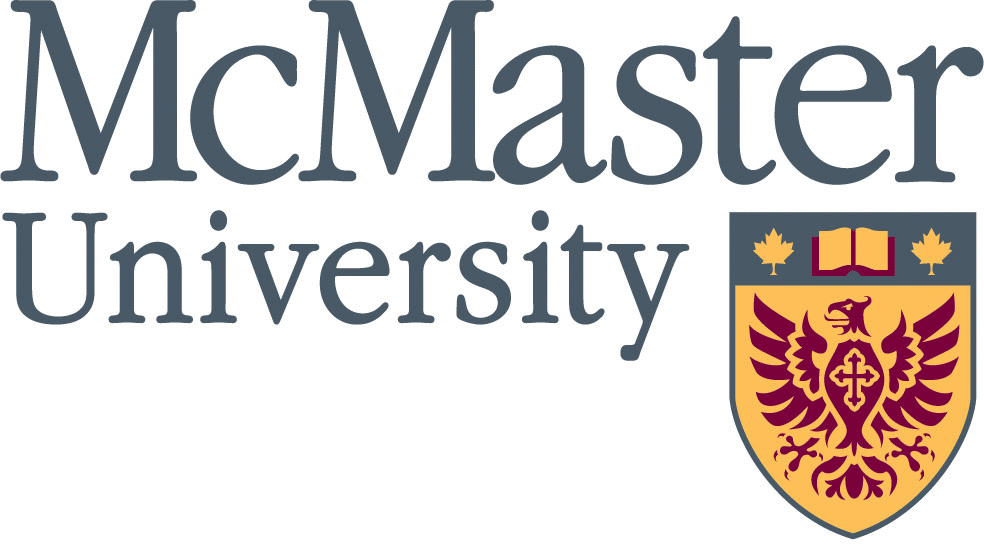
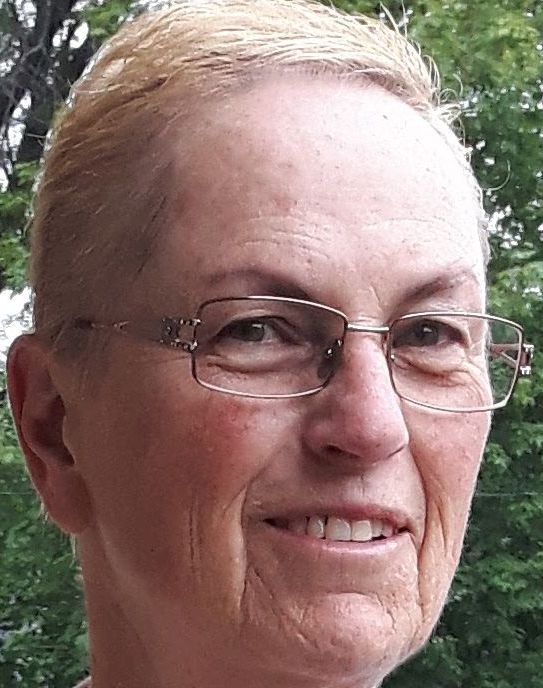

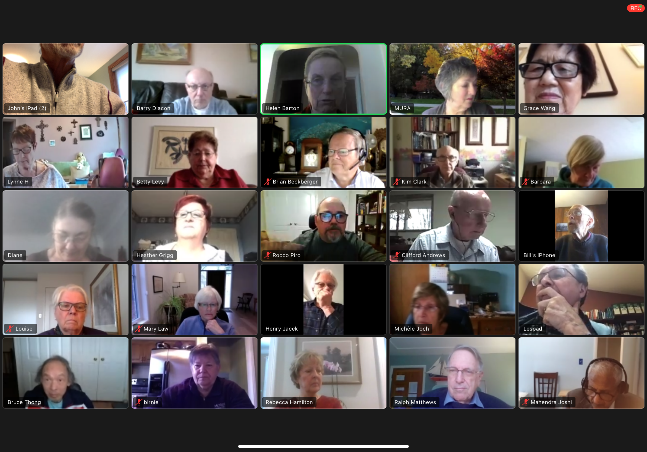 Over fifty people attended MURA’s first-ever virtual AGM, which took place on Zoom. The meeting was preceded by a half-hour of online social time with participants from coast (St. John’s, NL) to coast (Vancouver, BC). It was good to be able to connect with members who in ordinary times would not have been able to attend, and MURA Council has decided to look for ways to offer members the opportunity to attend future events virtually, even after we return to in-person meetings.
Over fifty people attended MURA’s first-ever virtual AGM, which took place on Zoom. The meeting was preceded by a half-hour of online social time with participants from coast (St. John’s, NL) to coast (Vancouver, BC). It was good to be able to connect with members who in ordinary times would not have been able to attend, and MURA Council has decided to look for ways to offer members the opportunity to attend future events virtually, even after we return to in-person meetings.